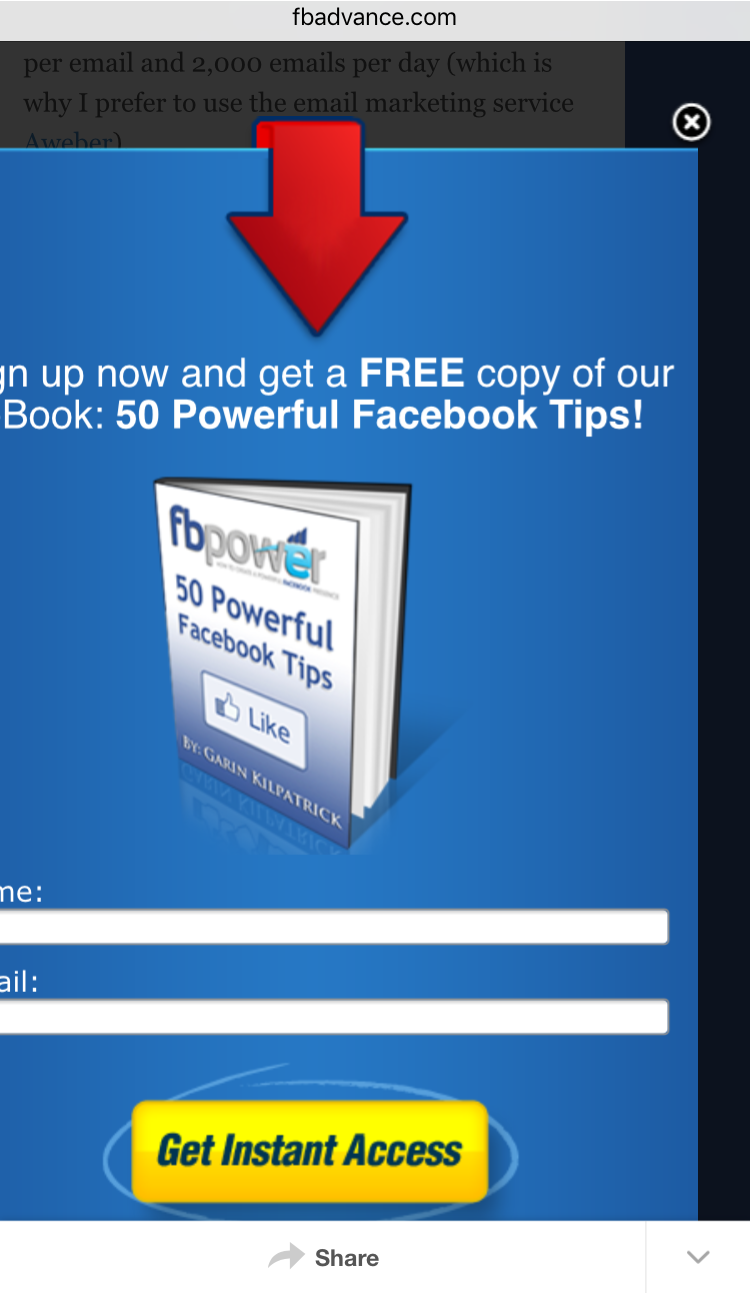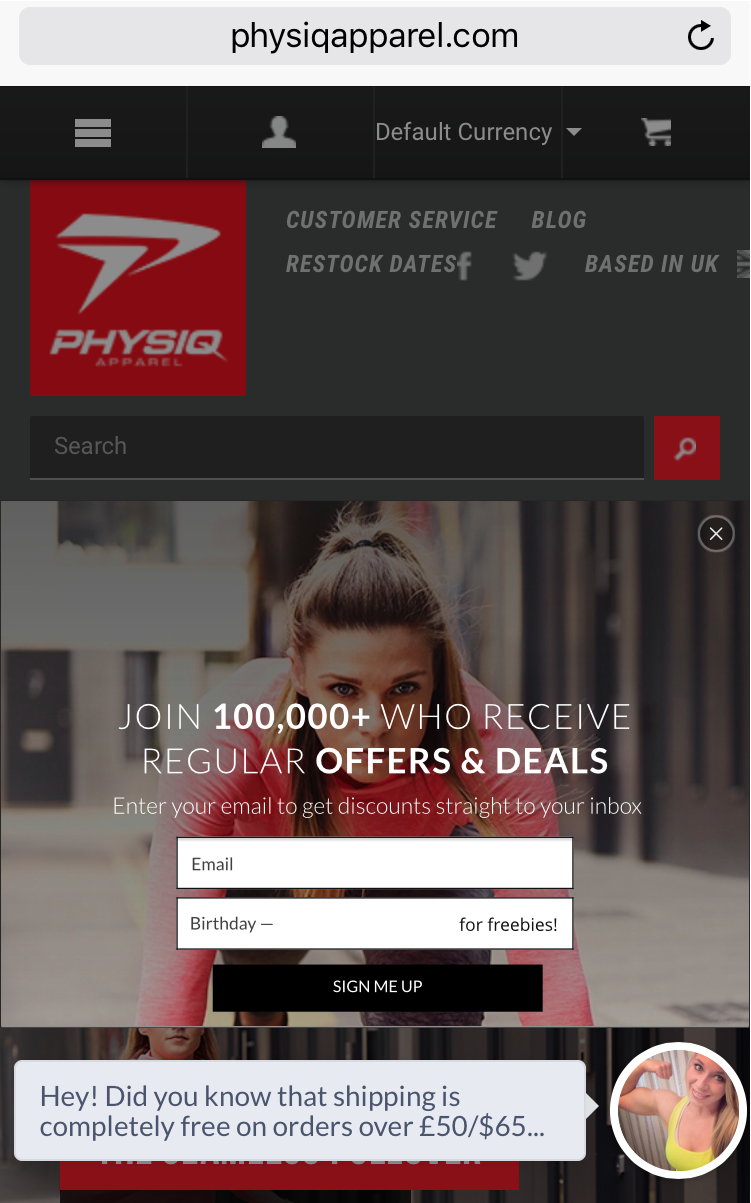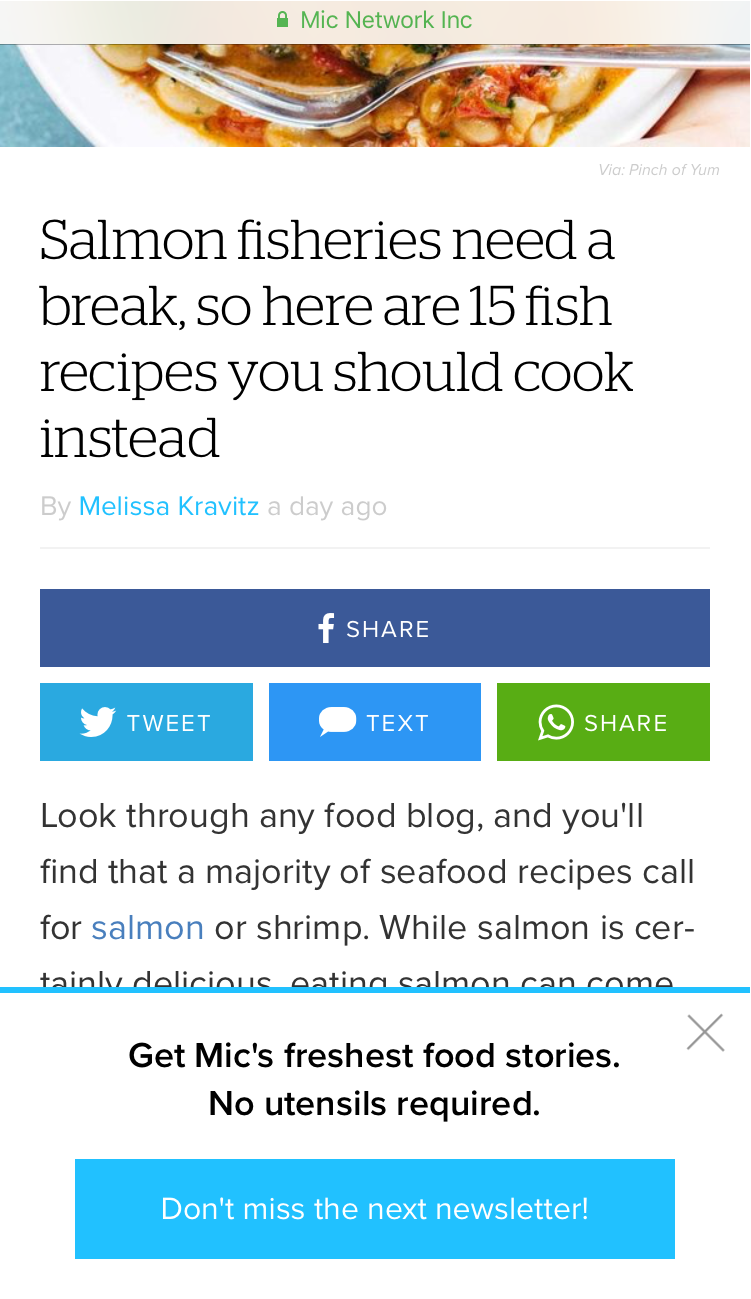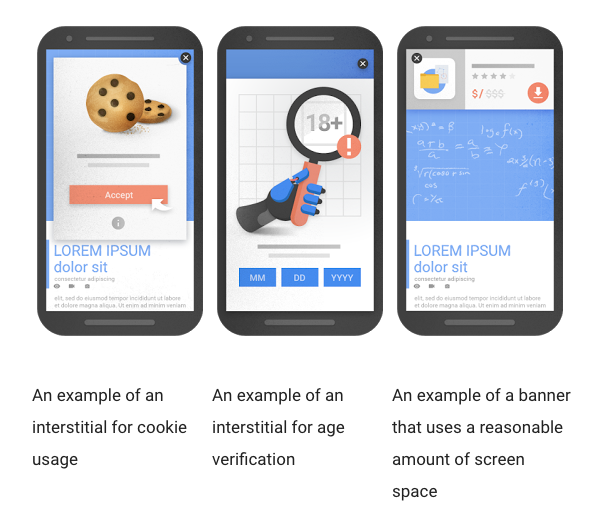Does this look like your mobile website?

And is this what your visitors see on your blog, only three seconds in, while trying to read your content?

If you’ve been using mobile pop-ups and interstitials, it might be time to rethink your strategy.
Why? Because they’re not just annoying but also disruptive to users’ browsing flow, preventing them from easily accessing the content that they were expecting when they tapped on the search result. Plus, they’re slowing down your page load time, which has a negative impact on your rankings as well as on user experience.
And if there’s one thing that Google hates it’s sites that provide a poor user experience, especially on mobile. So it’s no surprise that the search giant will once again update its mobile-friendly search algorithm in January 2017. This time they’re targeting sites that display “intrusive interstitials” – pop-ups, mainly – that make it difficult for users to access the content they expect to see. Starting January 2017, these sites will get penalised and may find that their content does not perform as strongly as it used to in mobile search.
This update follows Mobilegeddon, which made waves in the spring of 2015, especially because not everyone took Google’s warnings seriously. Just take a look at these stats:
• Traffic to non-mobile-friendly websites from Google mobile searches fell 12% in the two months after the changes took effect
• Nearly 50% of non-mobile friendly URLs dropped in rank
As with Mobilegeddon, Google announced the interstitials update ahead of time to give businesses an opportunity to adjust their strategies and make the changes they need to make.
So, now that you understand how serious the threat is to your site’s visibility in the mobile search results, let’s look at what you can do to prepare and to prevent a penalty.
Top tips on what to do to prepare
In the official announcement, Google Product Manager Doantam Phan has provided a few guidelines on which interstitials could result in a penalty starting January 2017.
1. “Showing a pop-up that covers the main content, either immediately after the user navigates to a page from the search results, or while they are looking through the page.”
Take a look at this example:

So you run a search for “running shoes for women”, find an interesting result and you tap on it to go to the site. Now you expect to enter the site and see the list of “running shoes for women” you were promised in the description in the search results.
Instead all you see is this pop-up that covers the entire screen, asking you to sign up for a mailing list. Not only is this frustrating but also ridiculous as how can you be asked to sign up for something when you’ve not even had the chance to go on the site and see if they have the products you’re looking for?
Another example of intrusive interstitials is when you go on a site to read an article and three seconds in, a pop-up appears, asking you to subscribe to a mailing list.
What to do instead:
Add a subscribe box at the end of your articles to avoid disrupting readers. If a user reads through until the end, it means they find your content interesting. This also means they are more likely to subscribe to your mailing list so they can get access to more content like the one they just finished reading.
2. “Displaying a standalone interstitial that the user has to dismiss before accessing the main content.”

Users want to be able to access information quickly and easily. But when interstitials are present, that means they have to take a few extra (and unnecessary) steps to get to that information.
This might actually be one of the reasons why Google started showing the quick answer boxes directly in the SERPs.
What to do instead:
Put your visitors’ needs first by making content the main focus of your website. They’ve already taken several steps to find your site, so don’t waste any more of their time. If you must use interstitials, make sure they’re non-intrusive. You can also add the actions from your pop-ups as elements on the page without stealing focus from content.
Here’s an example of a less intrusive pop-up:

3. Using a layout where the above-the-fold portion of the page appears similar to a standalone interstitial, but the original content has been inlined underneath the fold.
Moving important content under-the-fold can lead to bad ranks. Google has been emphasising the importance of above-the-fold content everywhere possible. Notice the Page Speed Insights results?


By loading a pop-up before your page’s original content, you are doing additional network roundtrips which Google considers to be issues that need fixing. The same goes for the JS and CSS that you might be using to generate the interstitial’s content.
Which interstitials are safe to use?

Not all interstitials are created equal, meaning not all will result in a penalty. Here are examples of interstitials that won’t affect your rankings, if used wisely:
• Interstitials that appear to be in response to a legal obligation, such as for cookie usage or for age verification.
• Login dialogs on sites where content is not publicly indexable. For example, this would include private content such as email or unindexable content that is behind a paywall.
• Banners that use a reasonable amount of screen space and are easily dismissible. For example, the app install banners provided by Safari and Chrome are examples of banners that use a reasonable amount of screen space.
So, if you must use pop-ups, make sure you use these responsibly. This also means that they should cover as little of the screen as possible and shouldn’t obstruct the user’s intent.
In conclusion
Whenever you’re considering using a pop-up on your site, ask yourself these questions first:
• Will this annoy or frustrate the user?
• Does it obstruct the user’s initial intent?
• Does the user first need to close the pop-up before they can do what they came here to do?
If the answer is YES to all these key questions, then you shouldn’t use interstitials as you’ll only be providing a poor experience to your visitors, who are unlikely to come back.
Are you using interstitials on your site? How are you using them without disrupting your visitors? Let us know in a comment below.
Comments
Please remember that all comments are moderated and any links you paste in your comment will remain as plain text. If your comment looks like spam it will be deleted. We're looking forward to answering your questions and hearing your comments and opinions!